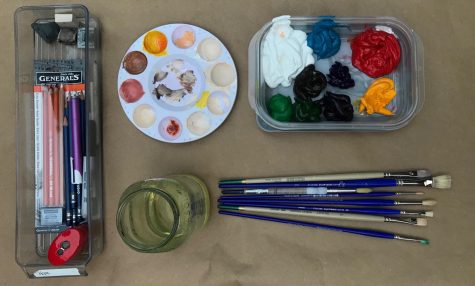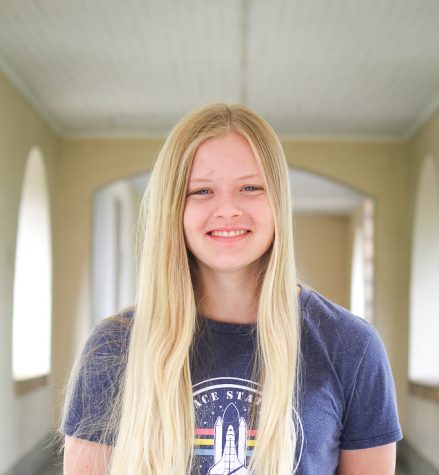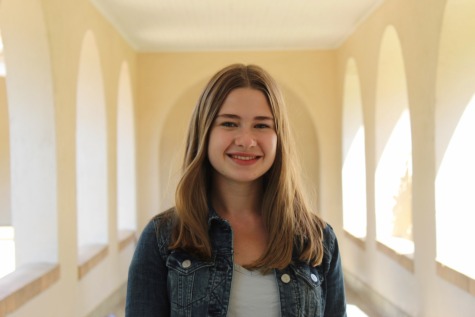Art department distributes supplies, adjusts to online learning
September 5, 2020

Amid the COVID-19 pandemic, the Palo Alto High School art department is adjusting to online learning by distributing materials to students from campus and will continue to do so throughout the semester, teachers say.
According to Kate McKenzie, who teaches Advanced Painting and Drawing alongside AP Studio Art 2D Drawing and 2D Design, she and her fellow art teachers have been organizing take-home kits with art supplies and distributing them to students from campus for the past four weeks.
“It was a brutal process,” McKenzie said. “I probably sent home somewhere between four to 10 weeks of supplies for my students.”
McKenzie said she plans to distribute materials to her AP Studio Art 2D Drawing and 2D Design students about once a month, but expects her Advanced Painting and Drawing students to come back for more supplies at the end of the quarter. Art Spectrum teachers tried to supply students with enough materials to last a semester, according to McKenzie.
McKenzie said buying the materials for the take-home kits would not have been possible without support from the Paly administration.
“I need to acknowledge and be really grateful to the administration because they’ve supported us,” McKenzie said. “It’s not cheap to send home supplies because we have to send home supplies with every kid, whereas normally, we would have a class set of supplies.”
Senior Hope Morita, who is taking AP Studio Art 2D Drawing and 2D Design, said she visited campus before school started to pick up her materials, which included pencils, brushes, oil paints, and a palette. Students in her class who did not already own an easel received one with the rest of their supplies, according to Morita.
Even with adequate materials distributed to each student, McKenzie said she will likely have to reduce the number and scale of projects this semester.
“The amount of time that we have with our students is just so dramatically limited, that we’re all going to have to cut,” McKenzie said. “I’m already lowering expectations a little bit in terms of the prep work we do and the size. … We just might not go in depth in every project, and I’ll definitely have to cut out a couple projects.”

Distance learning has caused greater challenges for the ceramics classes, which require specific appliances and tools that are only available on campus. According to junior Sarah Crystal, who is taking Advanced Sculpture, students may drop off assignments at school to be fired in the kiln, but will be unable to use other equipment. One major element of the Ceramics and Sculpture class is glassblowing, which is not possible in an online setting.
“For me, it [glassblowing] is just something I look forward to every three weeks or however often I get to do it,” Crystal said. “I definitely took ceramics … in part because of glass blowing, and that’s just been completely cut out.”
The students in Advanced Sculpture each received a box containing two different types of clay, a board for sculpting, wooden carving tools, a utility knife, and a few other basic materials, Crystal said.
According to Steve Ferrera, who teaches Ceramics and Sculpture and AP Studio Art 3D, remote assignments are especially challenging for his sculpture class because they require a wide variety of materials, which can be expensive. However, Ferrera said the setbacks of online learning have led him to teach with media he would otherwise not use.
“The students did get some oil clay in their take home box, which will be a new experience,” Ferrara said. “Normally we wouldn’t teach that material because it’s on the expensive side, but it’s perfect for home sculpting because it doesn’t dry out or make a mess.”
Although some of the curriculum has been altered, the class periods remain dedicated to working on projects individually. However, one key difference between in-person and online learning, Morita said, is the lack of social interactions that happen when in the company of peers.
“Usually in art class, you’d be sitting right next to all your friends, just asking for advice,” Morita said. “But right now, you’re kind of on your own.”
To help simulate a classroom environment, some students in AP Studio Art 2D Drawing and 2D Design organized a video chat in which they discuss their work and give each other advice, according to Morita.
“It [AP Studio Art] is like a small community,” Morita said. “We’ve all been doing art together since freshman year, so we all know each other pretty well.”
McKenzie said she also considers the relationships between her students to be an important part of their experience in art class.
“The one thing I really hope I do is provide opportunities for my students to get to know each other,” McKenzie said. “Those connections are just as important as any instruction I do.”



